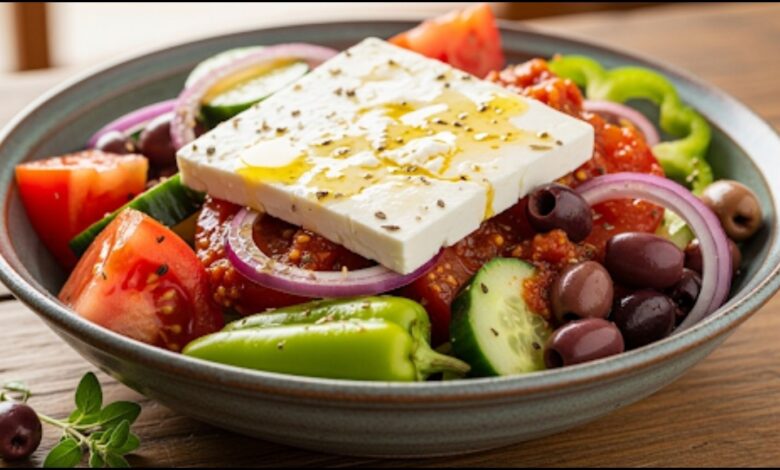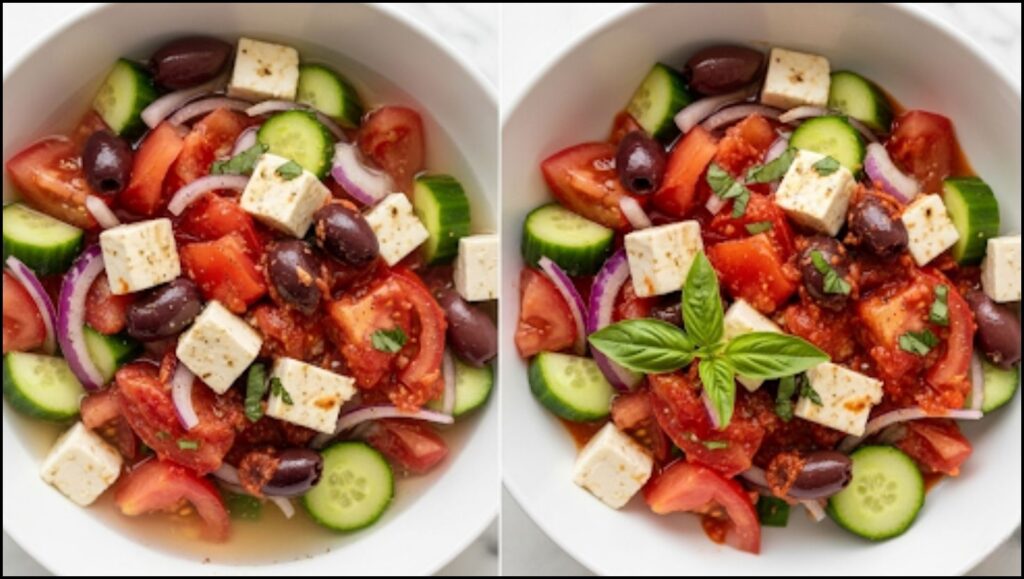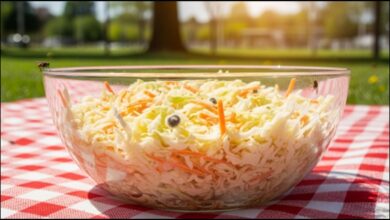How an Unconventional Greek Salad Tip from a Culinary Expert Elevates a Classic Dish
A viral, unconventional Greek salad tip from a renowned chef is changing how home cooks approach the classic dish. The method involves creating the dressing first by crushing tomatoes with salt and oil, producing a richer, more authentic flavor.

For decades, the Greek salad, or horiatiki, has been a global symbol of rustic Mediterranean simplicity. Yet, for many home cooks, recreating the vibrant, flavorful version served in a seaside taverna often results in a watery, underwhelming dish. Now, an unconventional Greek salad tip championed by a celebrated culinary authority is offering a solution that begins and ends with the tomato. The technique, promoted by Greek-American chef and author Diane Kochilas, sidesteps the common practice of simply tossing all ingredients together with a vinaigrette. Instead, it creates a rich, emulsified dressing directly in the serving bowl before most ingredients are even added, a method rooted in traditional Greek resourcefulness.
The Unconventional Greek Salad Tip Explained
At the heart of Kochilas’s method is the treatment of the tomatoes. The process begins by cutting ripe, flavorful tomatoes into chunks and placing them in the bottom of the salad bowl with salt, dried oregano, and a generous pour of high-quality extra virgin olive oil. The tomatoes are then gently crushed or muddled with a fork.
“This is the game-changer,” Kochilas explained in a video for her “My Greek Table” series. “You’re basically creating your dressing with the juices of the tomato as the base.” This technique leverages the scientific principle of osmosis. The salt draws out the water and flavorful juices from the tomatoes. Mashing them with olive oil creates a creamy, impromptu vinaigrette that coats every subsequent ingredient, rather than pooling at the bottom of the bowl. This method ensures a robust flavor that is integrated throughout the salad.

From Village Kitchens to Global Recognition
While this method might seem new to many, its principles are deeply embedded in Greek cuisine. The philosophy of using every part of an ingredient and building flavor from the ground up is central to many traditional recipes, known as mageirefta.
“What Diane Kochilas has successfully done is articulate a piece of kitchen wisdom that many Greek home cooks, especially of older generations, knew intuitively,” said Carolina Doriti, a food historian and chef based in Athens. “It’s not about a strict recipe but about technique. The goal is to maximize flavor with the ingredients you have, and the tomato is the soul of a good horiatiki.”
This unconventional Greek salad tip directly contrasts with the version of Greek salad often found in restaurants outside of Greece, which frequently includes non-traditional ingredients like lettuce and uses a pre-made, sharply acidic vinaigrette. A true horiatiki salad is a testament to ingredient quality, typically containing only tomato, cucumber, red onion, Kalamata olives, and a block of feta cheese.
Why It Works: The Science of a Better Salad
The success of the technique lies in its ability to solve the salad’s most common pitfall: excess water. Cucumbers, which are over 95% water, are a primary culprit. Many recipes now advise salting and draining cucumbers separately for about 15 minutes before adding them to the bowl, a step that complements Kochilas’s tomato-first approach.
“By drawing water out of both the tomatoes and cucumbers, you are concentrating their flavor,” explained Dr. Andrew Stapleton, a food scientist and author. “When you muddle the salted tomatoes with olive oil, you’re creating a stable emulsion. The tomato pulp acts as an emulsifier, helping to bind the oil and the tomato’s water-based juices, resulting in a dressing that clings beautifully to the other vegetables.”
This stands in stark contrast to just pouring oil and vinegar over vegetables. Without an emulsifier, the oil and water-based components (vinegar and vegetable liquid) separate, leading to a greasy and simultaneously watery experience.
The Final Touch: Celebrating the Feta
Another key element of an authentic horiatiki salad is the feta cheese. According to Greek culinary traditions, the feta should be served as a solid block, or sfela, placed on top of the salad. It is not traditionally crumbled into the mix. “The block of feta is crucial,” Doriti noted. “It allows each person to break off as much as they want, preserving the cheese’s creamy texture. When you pre-crumble it, it can become briny and lost in the mix.” Sprinkling the final dish with a bit more dried oregano is the customary finishing touch.
As this technique gains popularity through social media and food blogs, it represents a wider trend of home cooks seeking more authentic and technique-driven approaches to classic dishes. By shifting the focus from a list of ingredients to the method of their combination, this tip from a Greek culinary expert provides a simple yet profound upgrade to a beloved classic.
A Deep Dive into Celebrity Tuna Salad Recipes: The Unanimous Winner








